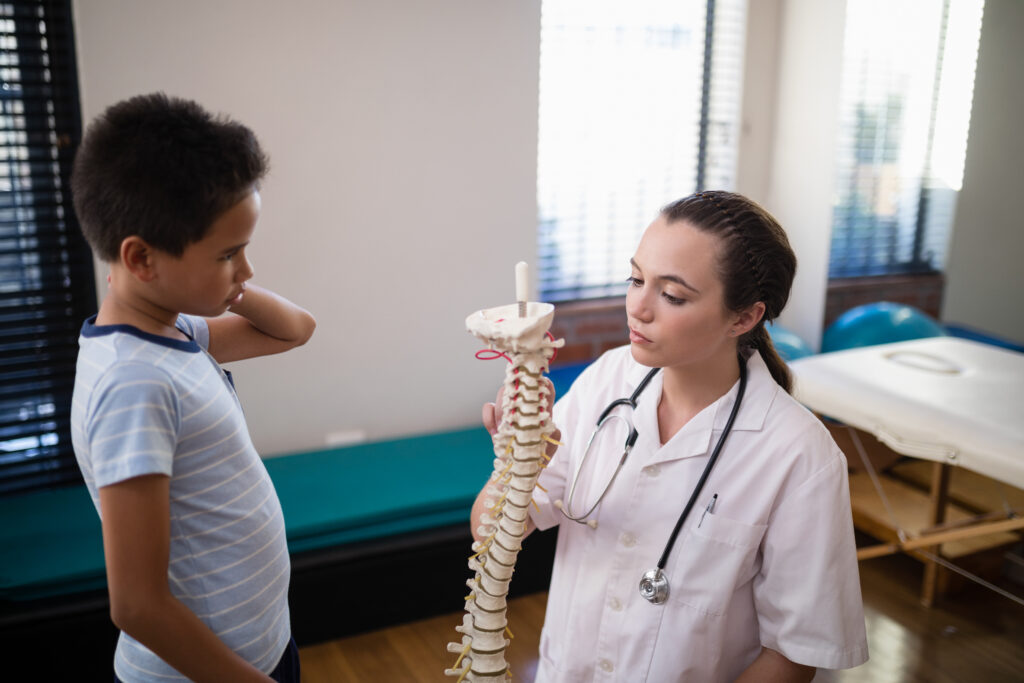When it comes to the topic of spinal surgeries, the term “Harrington Rod” holds historical significance. Initially, the Harrington Rod, made of titanium, played a crucial role in stabilizing spinal fusions. Although this technology has evolved over time, with modern alternatives emerging, understanding what is a Harrington Rod provides insights into the roots of spinal correction procedures.
What is a Harrington Rod: A Pioneering Solution
The Harrington Rod was revolutionary in its time, representing the first titanium rods used to stabilize spinal fusions. Employed by orthopedic surgeons, these rods were instrumental in addressing spinal deformities. The procedure involved attaching the rod to spinal bones, with the orthopedic surgeon utilizing a lever to force the spine into correction. This method, while groundbreaking, required a significant amount of power and precision.
Witnessing the Power of Correction
Observing a Harrington Rod surgery can be a poignant experience, as it highlights the intensity and precision required to straighten a child’s spine. The process involves a delicate balance of power and finesse, as the surgeon leverages the rod to guide the spine into the desired alignment. This visual testament underscores the challenges and advancements in pediatric orthopedics.
The Evolution of Spinal Fusion Technology
In contemporary times, the use of the Harrington Rod has diminished, paving the way for more modern approaches to spinal fusion. The essence of rod-based fusions, however, remains somewhat similar. Surgeons continue to utilize rods to stabilize and straighten the spine, albeit with advancements in technology and methodology.
Modern Alternatives to the Harrington Rod
While the Harrington Rod served as a pioneering solution, modern spinal surgeries have diversified. Procedures such as vertebral body tethering, vertebral body stapling, and apifix have emerged as alternatives. These contemporary techniques offer different approaches to spinal correction, catering to specific cases and conditions.
Vertebral Body Tethering: A Contemporary Approach
Vertebral body tethering represents a modern shift in spinal surgery. This technique involves the use of a flexible cord to guide the spine into alignment gradually. The flexibility of this method allows for a more dynamic correction, adapting to the patient’s growth and development.
Vertical Body Stapling: A Structural Intervention
Vertical body stapling is another innovative approach. It involves the insertion of staples along the vertebral column, creating a structural support system. This method provides stability while allowing for controlled adjustments, catering to the unique needs of each patient.
Apifix: Bridging the Gap
Apifix is a specialized device designed to address spinal deformities by providing internal support. This minimally invasive approach reduces the need for extensive surgery while offering a viable solution for specific spinal conditions. Apifix represents a bridge between traditional and contemporary spinal correction methodologies.
Choosing the Right Approach: Consulting with Surgeons
In the realm of spinal surgeries, no one-size-fits-all solution exists. The choice between traditional methods like the Harrington Rod and modern alternatives depends on various factors, including the nature of the spinal deformity, the patient’s age, and overall health. Consulting with experienced orthopedic surgeons becomes paramount in determining the most suitable approach for each case.
Accessing Expertise: The Role of Specialized Surgeons
Patients now have access to a diverse range of surgical options, thanks to the expertise of orthopedic surgeons. In major medical hubs like New York City, renowned surgeons specialize in pediatric orthopedics, offering a spectrum of solutions for spinal deformities. Seeking multiple opinions from different surgeons provides a comprehensive understanding of the available options.
Navigating the Landscape of Spinal Correction
The legacy of the Harrington Rod illuminates the progress made in the field of spinal surgeries. From its pioneering role to the emergence of modern alternatives, the journey of spinal correction has been transformative. As technology continues to advance, patients and surgeons alike navigate a landscape rich with possibilities, ensuring that each spinal correction procedure is tailored to meet the unique needs of the individual. Ultimately, the evolution from the Harrington Rod to contemporary solutions signifies a commitment to enhancing the quality of life for individuals facing spinal deformities.
Also read: What Exercises Can I Use to Fix My Posture
About:
Dr. Strauss is the director of the Hudson Valley Scoliosis Correction Center in New York. He has been actively engaged in scoliosis treatment for the past 30 years and has authored two books on the subject, Your Child Has Scoliosis and The Truth About Adult Scoliosis.
He is Vice President of the CLEAR Scoliosis Institute and a lecturer for their introductory and advanced workshops. He is certified in scoliosis bracing and in the use of scoliosis specific exercises. Dr. Strauss is a graduate of the ISICO World Masters of Scoliosis.His postgraduate studies also include a Masters Degree in Acupuncture as well as training in Grostic, Pettibon, CBP, Clinical Nutrition, Chinese Herbal Medicine, Manipulation under Anesthesia, and Electrodiagnosis.
His scoliosis practice has treated patients from 25 states and 32 other foreign countries.If you have questions about childhood and adult scoliosis and how it can be successfully treated without surgery subscribe to our channel!
